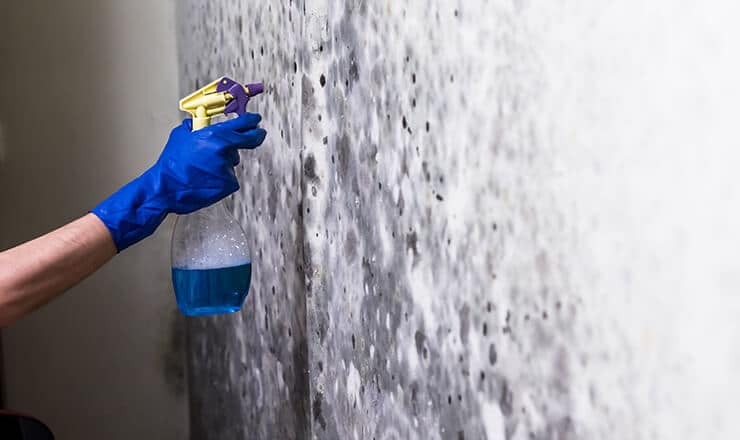Mold is nothing to sneeze at. It’s a common problem, and most owners are unaware of it. It can hide inside walls, under floors, or even in the HVAC system. But if you know it’s there, if it’s in plain sight for every walkthrough, what do you do?
Is selling a house with mold even legal? Yes, but lying about the presence of it is not. You must disclose all issues with a property.
Most buyers walk away from a house with mold because it compromises the appearance and structural integrity of the property. Some species are also harmful to your health.
To avoid a price hit or failed listing, here are eight steps to sell a house with mold.
1. Get a Professional Inspection
Hire yourself a professional, before listing, to discover hidden mold, what type it is, and the conditions promoting its growth. This way, there are no surprises when the buyer’s inspector comes through, because you’ll have been forthcoming about these issues.
2. DIY Mold Cleanup
It is tempting to clean up the mold yourself to save on budget. DIY mold cleanup typically involves a bleach solution and a set of small hand tools. You want to be careful not to damage surfaces where the mold colonizes. Less harmful solutions include vinegar, baking soda, and tea tree oil.
If the affected area is greater than 10 square feet and goes below the surface, you’ll want to hire a professional remediation service.
3. Remediation
Remediation involves the removal of mold, but also remedying the conditions that promote growth. EPA guidelines again suggest that you hire professional services if the mold:
- Covers more than 10 square feet;
- Is in your HVAC system; and/or
- Goes beyond your ability to remove it safely.
Removal requires proper clothing and equipment. Also, the wrong cleaners will promote the spread of mold rather than kill it.
The cost for professional remediation depends on three things:
- The type of mold;
- The degree of spreading; and
- Your geographic location.
Make sure whichever company you look at has the proper certifications.
4. Always Disclose Mold Issues
Whether the issue is remedied or not, it must be disclosed to buyers, using the proper disclosure forms. If remediated, buyers can then take the steps to prevent the mold from coming back.
5. Document Cases and Steps to Remediate
Just like you would if there was fire or flood damage, it is a good idea to document mold cases. Proper documentation includes inspector reports, photos, receipts from remediation services, or DIY steps written out to show how you treated the area.
Each state has its own disclosure rules, and you can check these with a real estate agent.
6. Prevent Further Growth
After removal, keeping the house dry and well-ventilated is an absolute must. Open windows and run fans and even dehumidifiers, if necessary.
7. Alternatively, You Can Lower the Price or Offer Credit
If you would rather NOT go through the hassle of remediation, and the type of mold is non-threatening, there are other options. You can either lower your asking price or credit the buyer for the cost to remedy the issue.
8. Sell “AS-IS” for Cash
If you want to forgo repairs, traditional sale warranties and inspections, you can sell the house “as-is” to a cash buyer. Real estate investors are eager to buy problem properties, so they can fix and flip them. Investors pay the market value, minus repairs, and also cover 100% of closing costs and additional sale fees. You enjoy a quick closing, on a date of your choice, and walk away from a potential hazard, with cash in hand.






